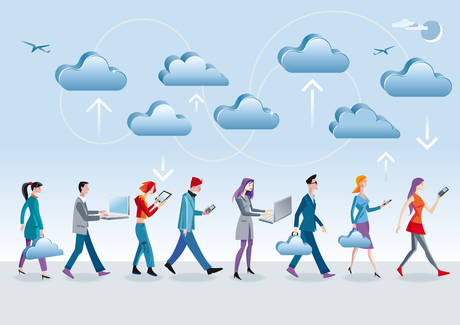Crowdsourced data - Satan, saviour or scapegoat?

As we inch ever closer to comprehensive vehicle-to-vehicle communication, transportation organisations around the world are investigating the use of data drawn from smartphones to deliver real-time traffic information.
Many mobile apps are available that allow users to post real-time information on events such as traffic snarls, red light cameras, accidents, road closures and police radar points. As with most crowdsourcing services operating in real time, these apps depend on numbers - the more users, the 'better' the information.
The biggest of them all is Waze. Developed in Israel in 2008, Waze attracted the eye of a number of tech companies including Facebook. Purchase negotiations between the two broke down and Waze was eventually sold to Google for over US$1 billion in 2013. While Google had already developed the perfectly adequate Google Maps GPS functionality, Waze offered user engagement and access to its customer base (the total number of users globally is not easily ascertained, but estimates put it at somewhere around the 50 million mark). It probably didn't hurt to keep it away from the likes of Facebook either. In addition to the user-reported information, Waze anonymously tracks and reports data including location and travelling speed, providing additional insight into current traffic conditions.
Theoretically, this all sounds pretty useful, but to the denizens of a once-tranquil Californian neighbourhood, a surge in user numbers has created a less-than-ideal situation. Sherman Oaks is a reasonably affluent suburb located in LA's San Fernando Valley. In December last year, it was reported on the US ABC News website that traffic congestion in the area had increased markedly, with cars snaking endlessly through the suburb's secondary roads in an effort to avoid freeway congestion during peak travelling times. Apparently local residents had singled out Waze as the culprit, although spokespeople for the company deny the connection.
Waze stands by their product, highlighting the fact that the algorithm actually works to alleviate congestion, not create it, and to actively promote safer driving - generally not an outcome in bumper-to-bumper conditions. ABC quotes part of a note from Julie Mossler, senior director of communications at Waze, to a concerned resident: "I want to stress that we alternate which routes are used, based on real-time conditions, to avoid generating congestion of our own on a different set of roads - it simply wouldn't be effective to route a large amount of Wazers (users) down your street."
While the algorithm argument sounds logical, there has to be some explanation for the mysterious and dramatic increase in peak-hour traffic. Algorithms aside, it really doesn't seem like a far stretch to implicate an app that functions by combining real-time GPS data and user-provided input, particularly in a situation where increased sharing adds to the overall value of the service.
Here in Australia we are hardly likely to encounter such remarkable impact in the short term. A quick check of Waze in Sydney mid-afternoon, mid-week showed only 99 users in a 200 km radius - not quite enough to cause gridlock. Obviously, this won't always be the case as additional users sign up and contribute to the service. Fast forward a couple of years and it will be interesting to see if the technology has been deemed a help or a hazard.
All-electric haulage fleet under mining alliance
A strategic alliance between Newmont and Caterpillar will see the rapid deployment of an...
How to measure ROI of field service management software
Some ROIs are easier to calculate than others. It's important to consider both tangible and...
Preparing the grid for electric vehicles
A new $3.4 million trial will help support growing adoption of electric vehicles across Australia...




